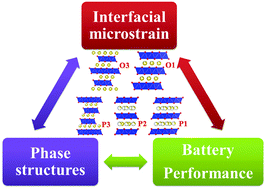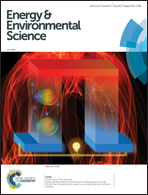Insights into the structural effects of layered cathode materials for high voltage sodium-ion batteries†
Abstract
Cathode materials are critical to the energy density, power density and safety of sodium-ion batteries (SIBs). Herein, we performed a comprehensive study to elucidate and exemplify the interplay mechanism between phase structures, interfacial microstrain and electrochemical properties of layered-structured NaxNi1/3Co1/3Mn1/3O2 cathode materials for high voltage SIBs. The electrochemical test results showed that NaxNi1/3Co1/3Mn1/3O2 with an intergrowth P2/O3/O1 structure demonstrates better electrochemical performance and better thermal stability than NaxNi1/3Co1/3Mn1/3O2 with P2/O3 binary-phase integration and NaxNi1/3Co1/3Mn1/3O2 where only the P phase is dominant. This result is caused by the distinct interfacial microstrain development during the synthesis and cycling of the P2/O3/O1 phase. In operando high energy X-ray diffraction further revealed that the intergrowth P2/O1/O3 cathode can inhibit the irreversible P2–O2 phase transformation and simultaneously improve the structure stability of the O3 and O1 phases during cycling. We believe that interfacial microstrain can serve as an indispensable bridge to guide future design and synthesis of high performance SIB cathode materials and other high energy battery materials.



 Please wait while we load your content...
Please wait while we load your content...